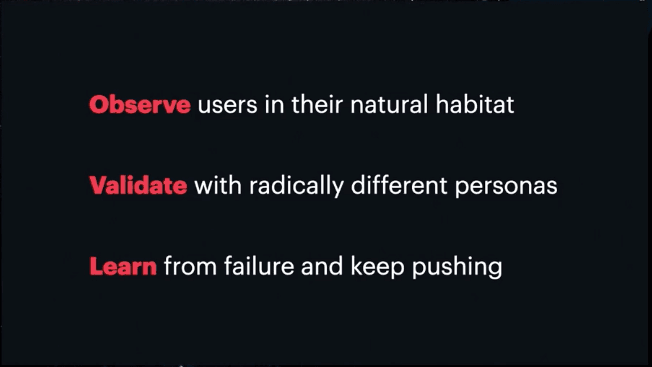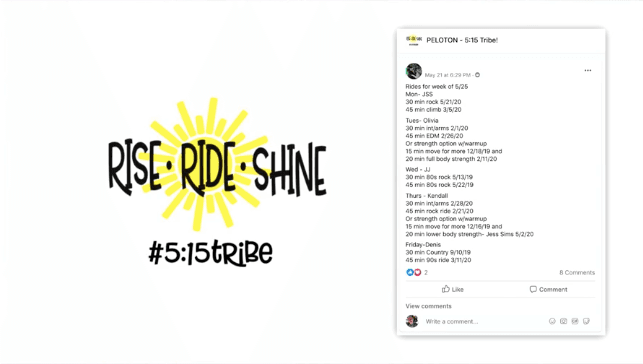How Peloton Harnessed the Power of Emergent Behaviors
David Packles of Peloton spoke at the 2020 Amplify conference to share his insights on how to build sticky products
As the director of product at Peloton, David Packles has helped build one of the stickiest fitness products of all time, with more than 90% of members still subscribed after 12 months. With such a loyal member base, getting ideas for new features and services from their most active users was easy. Getting those ideas to scale was not.
Peloton saw the product “hacks” from their most active members as opportunities to build features that appealed to the widest possible audience. So the fitness platform developed a framework to harness those emergent behaviors: observe the behaviors, validate them with different personas, and learn from trying new things.
In his talk at Amplify 2020, David explained how Peloton used that framework to launch successful features based on those organic actions from a subset of highly engaged customers.
Prioritize Emergent Behaviors
Active users are often quick to tell you about the functionality they want. Sometimes it’s through surveys and support tickets. Sometimes it’s through how they modify the platform to better fit their needs, such as using the location field on their profile to highlight their favorite sports teams as a way to build connections with other members. These modifications are examples of emergent behaviors, usage patterns or “hacks” that appear organically within a highly engaged subset of users. Translating these emergent behaviors to your broader user base is how you get feature adoption at scale.

Slides are from David’s presentation
While you might get great insights from your highly engaged users, they represent only a small percentage of your members. You can’t just build for them. How do you take those natural organic behaviors from your most active members and turn them into products and features that are applicable to your wider audience?
To help themselves answer this, Peloton asks two questions:
- How are our most engaged members using our product?
- How might we productize these behaviors and make them applicable to the widest possible audience?

Productize Those Behaviors
There are three core principles to translating emergent behaviors into mainstream feature adoption: observe the behavior, validate the behavior, and learn from failure.

Observe the Behavior
The best place to find emergent behaviors is to look at where your users are talking to each other, not to you. This can include creating social media groups, product forums and channels that you create or just keeping tabs on spaces where your users gather.
Peloton has created an extremely loyal member base that celebrates milestones and even gets tattoos together. Because they know the connectedness of their members, Peloton creates spaces to encourage that community and then listens to the discussions.
Validate the Behavior
Not all of the emergent behaviors will make valuable features for your user base. That’s why it’s important to test your feature with radically different personas than those who asked you to build the feature.
If an idea came from a group on Facebook, for example, Peloton tested the idea on members who weren’t active on social media at all. The company wanted to make sure the emergent behavior worked outside of the silo where it was created.
Learn from Failure
Many ideas that come from emergent behaviors will need to be tweaked in order to scale. Identifying how the ideas need to change requires testing. The goal is the widest adoption possible, so learn from tests that don’t quite work, and keep pushing.
During his talk, David recognized that this testing phase can be hard. “As product managers, we always want to be right. The fact is, we are not,” he said. Admitting when your ideas can be improved is core to building amazing products.
How Peloton Used Emergent Behaviors
Peloton has used this framework to observe, validate, and learn in order to launch, and then pivot, several successful initiatives. Here is one example David highlighted in his presentation:
The leaderboard was one of the most popular features early in Peloton’s growth. It created time-synced competition; people knew who else had been in that class and how they compared. When there were a few dozen people on the leaderboard, it created a sense of community. But as the company scaled and the leaderboard grew to 10,000 people, that sense of community was diluted.

Peloton looked to a highly engaged group called the 5:15 Tribe to provide inspiration on how to recreate that feeling of community. This group of active members all met at 5:15 a.m. to work out together, using a Facebook Group to organize the classes. Starting with the idea that people would want to work out with friends, Peloton launched a feature called “Friends Working Out Now,” allowing members to jump into a workout that a friend was already in.
After testing the feature, Peloton realized it wasn’t that people necessarily wanted to work out with people they knew. Members just didn’t want to work out alone. So Peloton changed the feature to allow members to see who else was taking a class at the same time they were, regardless of whether they knew each other. According to David’s presentation, 40% of daily active users take advantage of the feature, called “Here Now.”

From Emergent Behaviors to Loyal Users
By recognizing how highly engaged users adapt your product to meet their needs, you have a wealth of ideas for new features. Translating those emergent behaviors to a wider audience is not easy, but it can help build loyal users by creating helpful functionality.
Even if you aren’t a fitness platform with millions of users, you can still find ways to build a foundation for your community where they can interact. With that foundation, you can identify new ways your users engage with your product and also start turning emergent behaviors into features your entire audience will love.
Check out more Amplify sessions here. Or to learn about how companies are using data and product intelligence to grow, check out Amplitude’s newly-released Product Intelligence Report.

Aly McGue
Former Customer Advocacy Director, Amplitude
Aly McGue is a former Customer Advocacy Director at Amplitude. She focuses on building and nurturing strong Amplitude advocates and bringing their stories to life.
More from Aly




